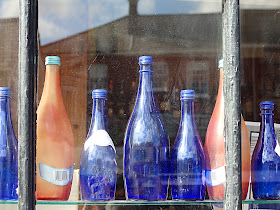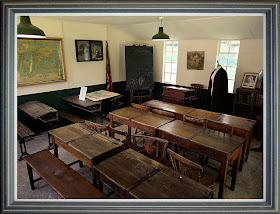A selection of books about nature and landscape that I've been reading recently:
Foxes Unearthed by Lucy Jones
There's no animal that provokes such complex emotions in our islands as the fox. It's by no means as simple as "all country folk want them exterminated and city people think they're cute". Country dwellers are often full of admiration for them, while urban foxes are frequently not tolerated.
Lucy Jones (whom British readers might remember being interviewed by Chris Packham on the Springwatch TV programme) investigates the matter from all possible sides in this fascinating and well-written book.
You'll find out what makes naturalists, huntsmen and hunt saboteurs tick; as well as the fox, both urban and rural, of course.
Deep Country by Neil Ansell
Just one man's time spent living in a remote Welsh cottage with no modern amenities - a kind of Welsh Walden, if you like. But here's the difference: I've read and re-read this several times while I always struggle with that other book, picking it up, putting it aside, going back to the beginning....
There's a kind of deep philosophy and spirituality in these pages but it's hidden away in the everyday happenings and events - lighting the fire, mending the roof, friends visiting, going on walks, watching the birds, digging the garden, a bit of forestry, helping out with some ornithological research...
This is a book about patience, belonging, calm, harmony, understanding, acceptance...yep, I like it!
Collected Writings 1933-1989 by Peter Scott
Anyone who's stood on the Norfolk coast on a midwinter's evening to watch the geese fly across the darkening sky to their roost will be touched by a little wild goose madness. So it's no surprise that I find this collection of Peter Scott's writings enthralling; he is after all the man who set up the Wildfowl Trust to protect and promote the well-being of these mysterious birds.
The early stuff is fascinating as he moves from wildfowling to research to conservation. He was right there at the beginning, figuring out ways to net birds and ring them, and how to interpret the findings. He visits the interior of Iceland to find where the birds nest, journeys to Antarctica and even slips in a short story about being torpedoed during the war.
The essays and articles are written for children's books as well as for more learned publications, so there's a fair bit of repetition as he explains things to various audiences. But all that doesn't matter - it's his endless enthusiasm that shines through.
60 Degrees North by Malachy Tallack
An exploration of the life and scenery to be found at the latitude of the Shetlands, the adopted home of the author. So we venture from Shetland to Iceland, Greenland, Canada, Alaska, Siberia and the Scandinavian lands, before returning once more to Shetland.
Besides exploring the geographical, historical and political realities of these marginal lands, Malachy Tallack meets some diverse characters and has some interesting adventures and discoveries, but more importantly it's about a young man finding his way in the world and trying to reach a safe harbour, having been ripped from his moorings following the death of his father.
The Invention Of Nature by Andrea Wulf
Alexander von Humboldt's name survives today in the names of many geographical features - there are mountains, counties, an ocean current and even an area of the moon named in his honour - but few these days would be able to tell you much about him. But Andrea Wulf can, and does, in this grand book.
Humboldt was one of those infuriating scholars who wouldn't settle down to study and pursue a regular career. Instead his insatiable curiosity forced him to travel as much as he could, at least till the money ran out. He wanted to understand everything he saw - botany, geology, meteorology, oceanography, astronomy.....and he was always seeing connections and parallels within his various fields of interest.
It was in synthesising all these strands that his true importance lies and it can be argued that he was the first ecologist and the first person to realise the influence of man on the environment.
Most biographies end with the death of their subject but this one goes on to consider his influence on others - Goethe, Thomas Jefferson, Simon Bolivar, Charles Darwin, Thoreau and John Muir all read his works and were changed by them. Quite a list for someone who's largely forgotten these days.
The Shepherd's Life by James Rebanks
There are a lot of books about the English Lake District and all of them seem to be written by people who've come from elsewhere. This is the only one I know that's been written by a Lakeland shepherd, albeit one who's been away to university.
As an insight into the working life of a modern day farmer it's about as good as you'll find; it's all there - the quad bikes, foot and mouth disease and the economic tightrope of balancing the books, as well as the scenery, social hierachy and ties to the land.
But even more relevant are his observations about the tourists, poets and authors who have a very different relationship to the wonderful landscape of the lakes and fells.
Take care.
























































